Are Bears Related to Dogs? Surprising Connections
Uncover the genetic lineage between bears and dogs and explore their unexpected relationship. Find out how closely they are connected.
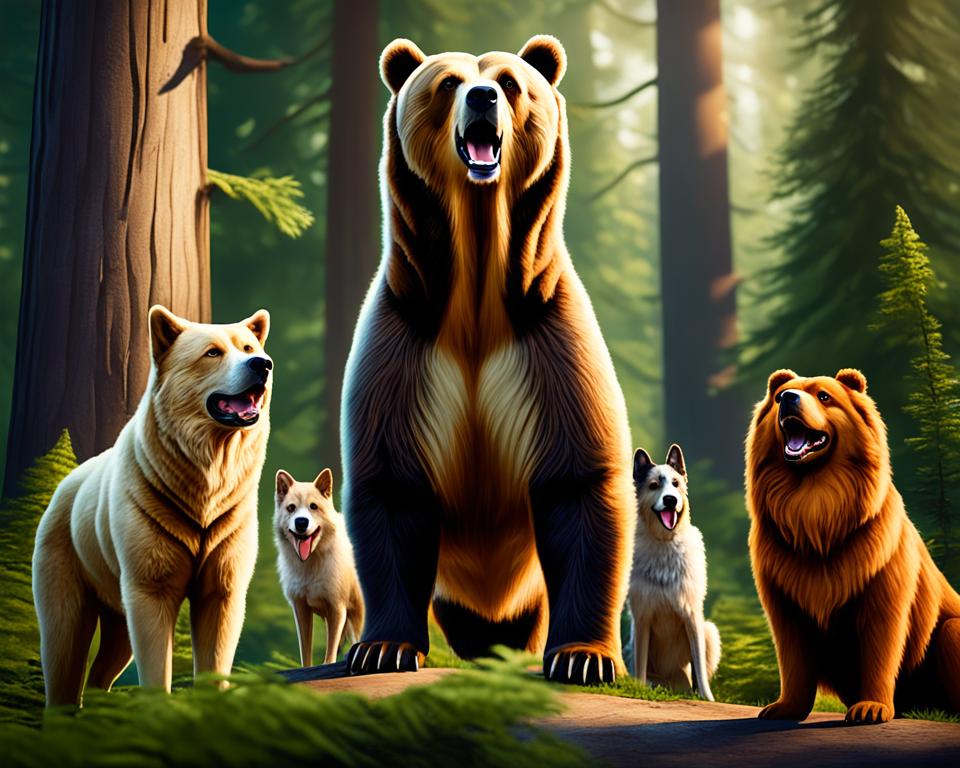
Have you ever wondered if bears and dogs share a surprising genetic lineage? It’s a common question, given their occasional resembling appearances and memberships in the Carnivora Order. But how accurate is this idea, or is it just a product of cultural perceptions and viral content?
Taxonomic classification, a system devised by Carolus Linnaeus in the 18th century, places dogs in the Canidae family along with wolves, coyotes, and foxes, while bears belong to Ursidae along with panda, raccoons, and weasels. Despite this seemingly clear separation, both families fall under the Carnivora Order, which includes facultative carnivores like bears, dogs, and raccoons, as well as obligate carnivores like lions and tigers.
Yet, bears and dogs have diverged on distinct evolutionary paths since their last common ancestor, known as Miacids, roamed the earth between 30 and 60 million years ago. Despite having some shared characteristics, such as omnivorous diets and a plantigrade posture, their genetic connection today is not close.
So, while dogs were the first animals domesticated by humans around 30,000 years ago, bears remain wild creatures that can live up to 25 years in the wild and up to 50 years in captivity. Cultural factors and folk beliefs often exaggerate the connection between them, but in reality, their mammalian connection stems from an ancient, distant lineage.
Understanding the Dog Family
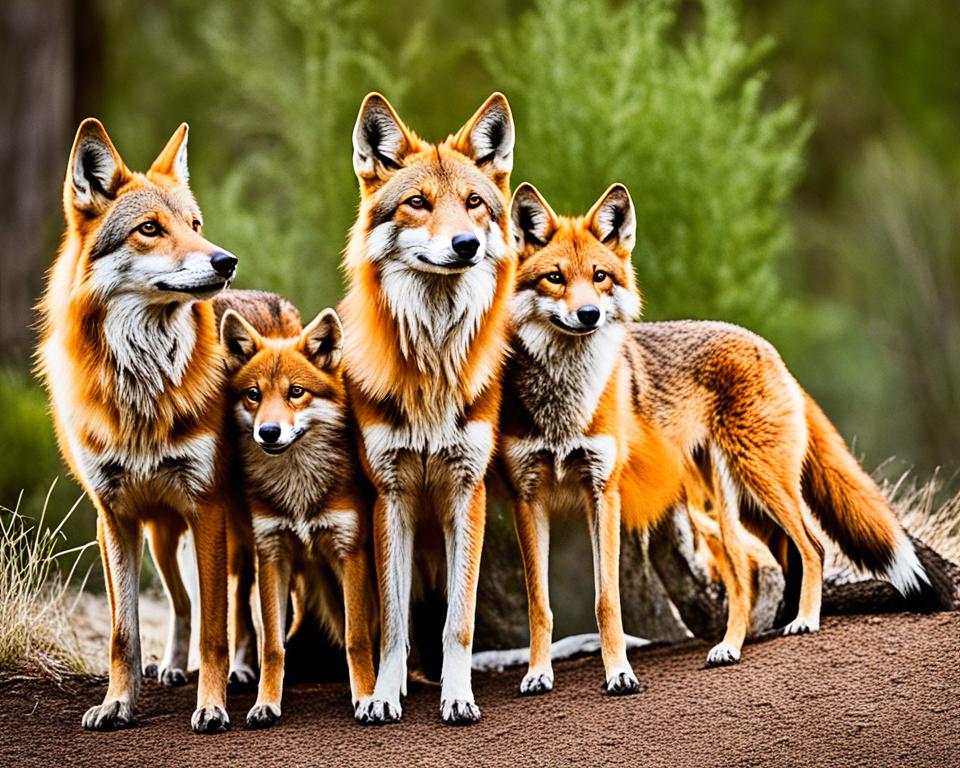
The Canidae family, composed of 14 genera and 34 species, includes a diverse range of carnivorous mammals such as wolves, foxes, and coyotes. Members of this family exhibit common characteristics like pointed ears, long jaws, non-retractable claws, and less-specialized teeth, which differentiate them from other groups within the Carnivora order.
Among the canids, the Fennec fox is the smallest, standing at just 9.4 inches high and weighing a mere 2.2 lbs. In contrast, the gray wolf is the largest, reaching up to 6.5 feet in height, with males weighing between 70 to 145 lbs. Dogs, another prominent member of the Canidae family, have been living alongside humans for approximately 30,000 years, demonstrating an extraordinary adaptability and a fascinating bond with human societies.
Canid species have various reproductive and social behaviors. For instance, domestic dogs can have up to 15 pups at a time, and their social adaptability has made them a beloved companion to humans. On the other hand, wolves have a strict breeding hierarchy, where typically only the lead male and female breed within a pack. After a gestation period of 45 to 55 days, canids give live births, and their young are cared for by their social groups.
With members capable of reaching impressive speeds, coyotes can run up to 40 mph, showcasing their agility and hunting prowess. Wolves primarily prey on deer, domestic livestock, caribou, beaver, moose, and hares, highlighting their role as apex predators in their ecosystems. Unfortunately, several canid species, such as the African wild dog, dhole, Ethiopian wolf, and red wolf, are endangered, emphasizing the need for conservation efforts.
The Bear Family And Species
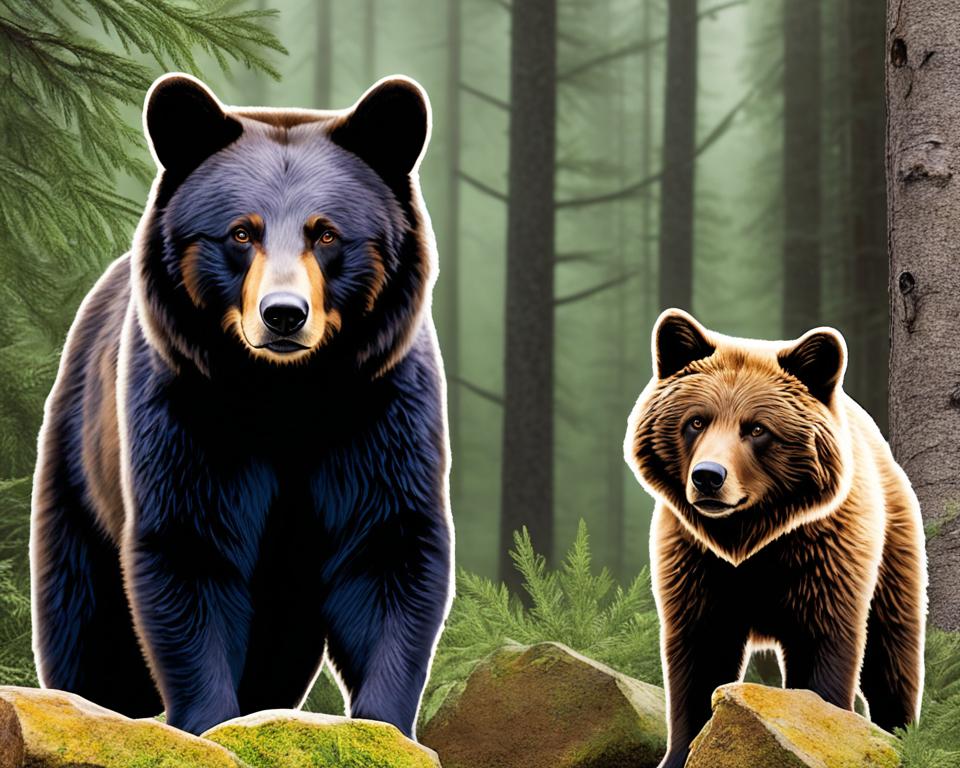
The Ursidae family, a significant group within the order Carnivora, traces its lineage back to the Eocene era, nearly 46 million years ago. This family of mammals consists of 5 genera and 8 bear species, each displaying unique characteristics and adaptations. Distinguished by their round ears, short snouts, and plantigrade feet, bears are notable carnivores in the animal kingdom.
Bears exhibit a range of behaviors, including solitary living and exceptional climbing abilities. Interestingly, despite their classification as carnivores, many bear species have varied diets. For instance, the American black bear is omnivorous, consuming plant materials, carrion, and live prey based on seasonal availability. Conversely, the giant panda’s diet is predominantly bamboo, while polar bears primarily rely on meat.
Within the infraorder Arctoidea, bears share a close genetic kinship with other families, yet they maintain a distinct evolutionary path. Recent genomic sequencing of four bear species has provided profound insights into their evolutionary history and interspecies gene flow. Genetic studies have identified hybrids like Pizzlies and Grolars, born from the mating of grizzly and polar bears, highlighting the genetic interconnectedness among bear species.
Significantly, studies have demonstrated that gene exchange occurred between most bear species, illustrating an intricate web of genetic relationships. This genetic diversity is crucial for the adaptation of bears to future environmental changes, ensuring the resilience of the Ursidae family. Thus, understanding the bear family’s diverse genetic makeup is essential for conservation efforts and the preservation of these remarkable mammals.
The Common Ancestry of Bears and Dogs

The evolutionary paths of bears and dogs offer a fascinating glimpse into the history of the carnivorous order Carnivora. Both groups trace their roots back to Miacids, small, weasel-like creatures that existed between 30 and 60 million years ago. This shared ancestor sets the stage for a closer look at their evolution and classification.
Shared Characteristics
Bears and dogs exhibit several shared characteristics due to their common ancestry. Both have evolved within the Caniformia suborder, which includes various facultative carnivores. Traits such as specific dental structures and omnivorous diets have emerged as evolutionary coincidences. These similarities often mislead people into perceiving a closer relation between the two species than is tectually accurate.
Taxonomic Classification
Within the scientific classification system, Caniformia incorporates nine extant families, including the Family Ursidae (bears) and the Family Canidae (dogs). Bears, which split from doglike ancestors during the Eocene Epoch, comprise the largest land caniforms, featuring eight species. In contrast, dogs encompass about 35 species. This separation in classification highlights the evolutionary split, resulting in distinct evolutionary paths despite their shared origins.
Miacids: The Ancient Connection
The link between bears and dogs deepens with Miacids, the ancient common ancestor. This key group navigated the carnivorous order Carnivora’s early split into Feliformia (cat-like) and Caniformia (dog-like) branches. The Miacids’ lineage reveals the root from which both dog and bear families stemmed, ultimately diverging into the species we recognize today. Consequently, despite the evolutionary split, Miacids provide a profound connection between these two fascinating groups.
Are Bears Related to Dogs?
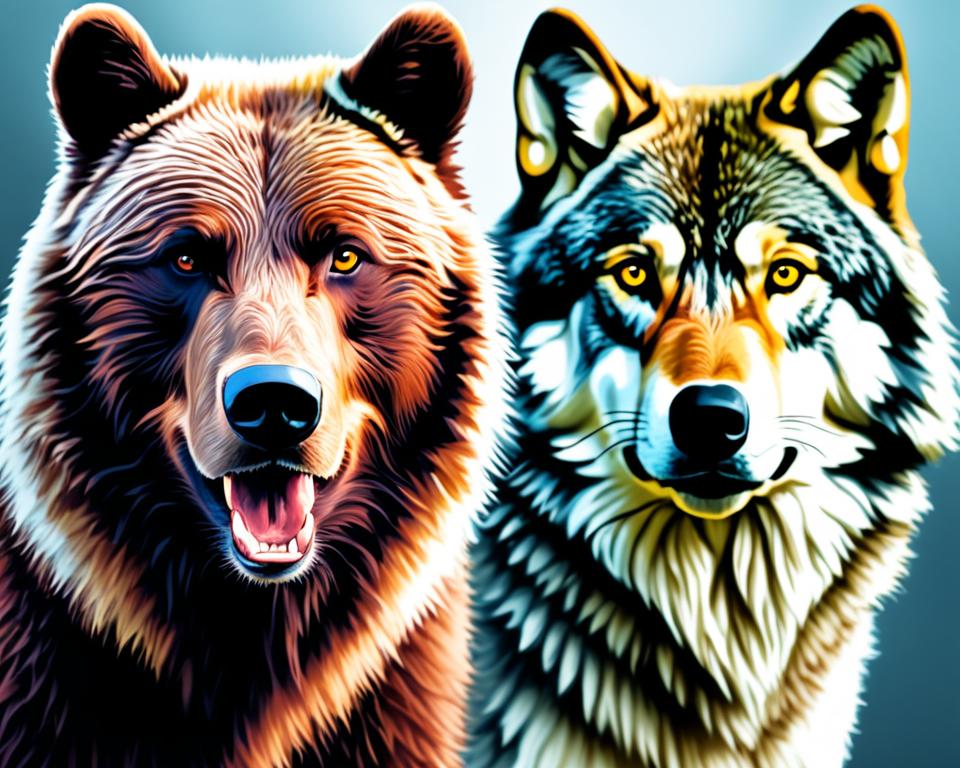
The question of whether bears are related to dogs has intrigued scientists for years. Answer is Both YES and NO! While it’s true that these mammals share a genetic connection, the relationship isn’t as straightforward. They both belong to the order Carnivora, which means they stem from a common ancestor, but their species evolution diverged millions of years ago, creating distinct mammal relations.
Research has shown that “beardogs” or amphicyonids, which lived millions of years ago, shared habitats with ancient dogs. For instance, beardog fossils and dog fossils are often found in the same rock layers, indicating their coexistence. An earlier study in 2001 highlighted that rock layers containing amphicyonids also had numerous dog fossils.
Despite their misleading common name, beardogs aren’t closely related to modern bears or dogs. The Royal Society report from 2016 found a characteristic bone-enclosed space near the ears of beardog skulls, which is distinct from both bears and dogs. These fossils, ranging in size and weight, from tiny Chihuahua-sized specimens in Texas to the much larger Tartarocyon species estimated to weigh around 441 pounds, showcase a wide range of physical traits.
The evolutionary path of these ancient creatures remains unclear, despite long-standing studies. Fossils like that of Tartarocyon’s jawbone, discovered in the Pyrenees, introduce new characteristics such as a unique premolar shape, causing further discussion on mammal relations and species evolution.
Understanding the genetic connection between bears and dogs requires diving deep into their evolutionary history. It’s evident that while they share a distant ancestor, their evolutionary journey has led them in separate directions, resulting in the diverse array of species we see today.
Dog Breeds That Resemble Bears
Among the vast variety of dog breeds, some particular ones stand out for their striking bear-like appearance. These bear-like dog breeds, such as the Tibetan Mastiff, Chow Chow, and Newfoundland, fascinate many dog enthusiasts due to their unique characteristics.
The Tibetan Mastiff, originally bred in the Himalayan Mountains, can weigh up to 150 pounds and requires frequent brushing to keep its coat clean. This breed is known for its protective nature and bear-like grandeur.
Chow Chows, one of the oldest breeds with origins in China, are often referred to as “puffy-lion dogs” due to their high level of fluffiness. They can adapt well to city living and require moderate exercise. These dogs, standing 17–20 inches tall and living up to 15 years, are perfect bear-dog hybrids in both appearance and stature.
Newfoundland dogs are another prominent example. These males weigh between 130-150 pounds and are known for their bear-like faces. Bred in cold conditions for aiding fishermen by pulling nets, they have a distinctive heavy fur coat and a gentle demeanor, despite their considerable size and drool.
Other bear-like dog breeds worth mentioning are the Caucasian Shepherd Dog, weighing up to 170 pounds, and the Great Pyrenees, which also boast large sizes and thick fur. These breeds, with their imposing bear-like features, demand proper training and care from an early age.
Additionally, the smaller but equally bear-resembling Pomeranians, although weighing only 3-7 pounds, are known for their fluffy coats and vibrant personalities, resembling miniature bear cubs. These dogs shed seasonally twice a year and make an adorable addition to any family.
Do Bears and Dogs Share a Common Ancestor?
Bears and dogs indeed share a fascinating lineage tracing back to a common ancestor known as the Miacids. These ancient creatures lived tens of millions of years ago and are fundamental to the carnivore ancestry that links these two modern families. The evolution of mammals has seen these lines diverge significantly over time, resulting in two distinct families: Ursidae for bears and Canidae for dogs.
Bears have evolved from a single common ancestor into eight different species existing today, including the polar bear, brown bear, and American black bear. They generally weigh between 150 to 2,000 pounds depending on the species, with polar bears being among the heaviest, typically weighing between 1,000 and 2,000 pounds. Meanwhile, dogs have been domesticated over thousands of years, resulting in various breeds with specific functions like guarding, herding, and hunting assistance.
It’s fascinating to note that canines were chosen as close companions due to their trainability for various purposes such as hunting and security. Unfortunately, bears, in contrast, cannot be successfully domesticated. Both dogs and cats belong to the order Carnivora, along with bears, hyenas, mongooses, civets, skunks, badgers, seals, walruses, and sea lions. This comprehensive carnivore ancestry showcases how diverse and adaptable these species have become across millions of years.
The blade-like carnassial teeth, found in their fourth upper premolar and first lower molar, are a hallmark of carnivorans, evolved for shearing through food efficiently. This trait is a testament to the shared lineage tracing back to their common ancestor. Recent studies suggest domestic dogs may have been domesticated as early as 41,000 years ago from modern grey wolves, whereas the red panda and giant panda exhibit a distinct evolutionary path within the Carnivora order.
Could You Mate a Dog and a Bear?
Examining the mating possibility between dogs and bears, the scientific limitations emerge prominently. Despite occasional reports suggesting otherwise, such as the ostensible bear-dog hybrid found in Russia in 2018, interspecies breeding between these animals remains biologically implausible. The hybrid from Russia represents an intriguing outlier but doesn’t align with the broader scientific understanding.
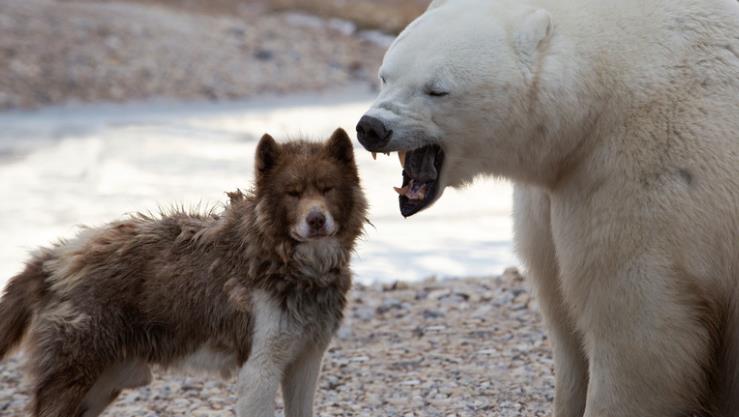
Both dogs and bears belong to different families—Canidae for dogs and Ursidae for bears. This interfamilial nature means their genetic material and chromosomes are incompatible. Historically, there have been few credible instances of such hybrids. Notably, the American Veterinary Review documented a case between a stray dog and an unknown bear in 1905-1906. Additionally, Col. John Jacob Astor owned a rare bear-dog hybrid from the Pyrenees in 1911, but these accounts are exceptions rather than rules.
While bears within the Ursinae subfamily can crossbreed under specific conditions, significant interspecies breeding complications exist between bears and dogs. Evolutionary developments and reproductive system differences further compound these scientific limitations, making successful mating improbable. In essence, nature’s intricate genetic frameworks ensure that dogs and bears, despite occasional anomalies, remain separate in the animal kingdom.
FAQs
Are bears related to dogs?
While bears and dogs share a very distant common ancestor and belong to the same order Carnivora, they are not closely related. Bears belong to the Ursidae family, whereas dogs are part of the Canidae family.
Does a bear count as a dog?
No, a bear does not count as a dog. Despite some superficial similarities in appearance and behavior, bears are part of the Ursidae family, whereas dogs belong to the Canidae family.
What is the closest relative to a bear?
The closest relatives to bears are other members of the Ursidae family, such as pandas and different species of bears. They are genetically and evolutionarily distinct from dogs and other Canidae family members.
Are bears related to cats or dogs?
Bears are more closely related to dogs than to cats. Both bears and dogs belong to the suborder Caniformia within the order Carnivora, whereas cats belong to the suborder Feliformia. Despite this, bears and dogs are part of different families: Ursidae for bears and Canidae for dogs.
How closely are bears and dogs related?
Bears and dogs share a distant common ancestor and have some similarities due to their shared heritage within the order Carnivora. However, they diverged millions of years ago and have since evolved into very different species within the Ursidae and Canidae families, respectively.
What are the characteristics of the Canidae family?
The Canidae family, which includes dogs, wolves, foxes, and coyotes, is characterized by pointed ears, long jaws, less-specialized teeth, and non-retractable claws.
What defines the Ursidae family?
The Ursidae family includes bears and is defined by features such as round ears, short snouts, plantigrade feet (walking on the soles rather than the toes), solitary behavior, and an omnivorous diet.
Who were the Miacids?
Miacids are the ancient common ancestors of both the Feliformia and Caniformia families. They lived between 30 and 60 million years ago and served as the root connection from which both dogs and bears evolved independently.
Can a dog and a bear mate?
No, dogs and bears cannot mate due to significant biological and genetic differences, including incompatible chromosomes and distinct evolutionary developments. They belong to different families and have dissimilar reproductive systems, making interbreeding impossible.
Which dog breeds resemble bears?`
Some dog breeds that resemble bears include the Tibetan Mastiff, Chow Chow, and Newfoundland. These breeds have large sizes, heavy fur coats, and certain behavioral traits that contribute to their bear-like appearance.





